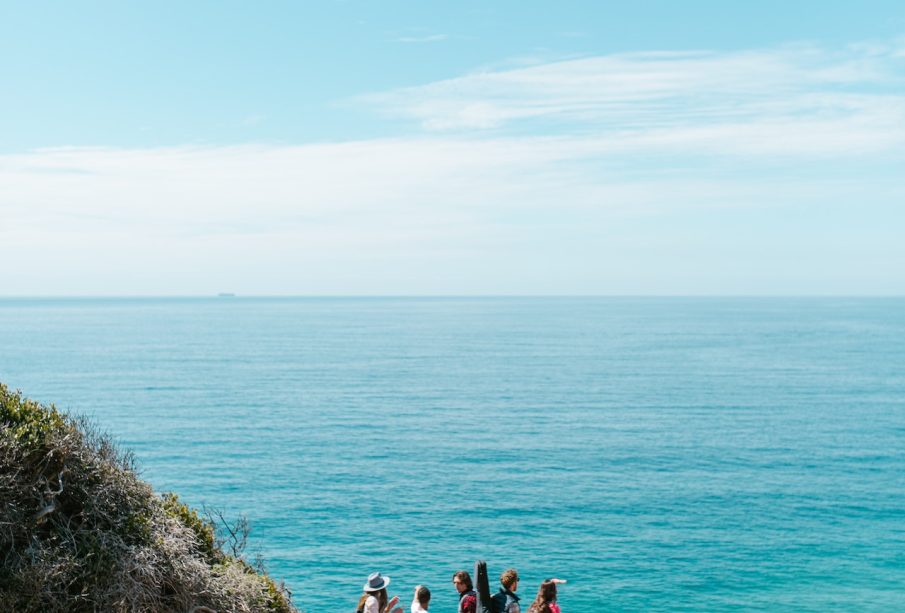Hiking in Cyprus: What to Pack

You actually don’t need to bring much with you because the hiking routes in Cyprus we suggest here are day hikes that last only a few hours. Just make sure you pack layers of clothing to defend against the sun, rain, and possibly snow. Always make sure to bring a lot of water with you.
- Hiking Daypack: We each carried a single daypack for trekking. This offered more than enough room for the items we needed for our day hike.
- Hiking Shoes: Some of the hikers we encountered were wearing sneakers or sandals. Even if it works for some of the smaller walks, we advise wearing hiking shoes to give your feet the support and grip they need for climbing over boulders and down steep inclines and incline.
- Hiking Poles: We normally bring one set of trekking poles between the two of us for shorter excursions (i.e., we each use one pole). On the Atalante Loop Trail and the Avakas Gorge Hike, we were extremely grateful to have these. These collapsible traveller hiking poles are suggested because they are portable and lightweight.
- Drinking water and snacks: Be sure to pack your own water and snacks for your trip because many of these paths in Cyprus are distant from stores and other amenities. Make sure you carry LOTS of water with you because it can get very warm, especially in the summer. Otherwise, you risk becoming dehydrated. One bad fact about Cyprus is that the tap water is unfit for human consumption; all the locals we spoke to warned against doing so. To avoid this, either pack a water bottle that also purifies or buy huge water containers (5-10+ litres) and fill your own reusable bottle with them.
- Sun protection: In Cyprus, the sun may be very intense even in the winter. Make sure you always have plenty of sun protection on hand, such as sunscreen with the highest SPF possible, a hat, and sunglasses.
Best Time to Hike in Cyprus
According to several residents we spoke with, springtime ( March to early May) is ideal for hiking because it comes before the scorching summer months and gives hikers the opportunity to observe wildflowers in bloom along many of the routes. Others suggested November because it is still early autumn and temperatures have not yet cooled off significantly from the warm summer.
Renting a car in Cyprus
We found having a rental car in Cyprus to be quite helpful. It provided us with a great deal of flexibility, which was very useful given the shifting weather. We had more freedom to make spontaneous stops along the trip thanks to the rented car. At the time of our stay, rental car costs were extremely affordable (e.g., $20 USD per day with insurance). Additionally, we didn’t spend a lot of money on gas because the island isn’t that large.
The majority of the places we stayed in Cyprus also provided free public parking or reasonably priced private parking lots, as did all of the hiking paths mentioned above.
Planning a Hiking Focused Cyprus Trip:
One Week Travel Itinerary
Our main goal in creating our one-week schedule for Cyprus was to identify the top treks there and use those as our guiding principles. Then, after marking locations where we could rest and base ourselves along the way, we devised a basic path to travel around the island (see below).
We also kept a close eye on the weather because it was always changing. We had a rental car, flew to Cyprus in the off-peak season, and maintained our flexibility by making last-minute hotel reservations.
Here is our complete schedule for our week-long trip to Cyprus, which includes four-day hikes, a stop in rainy Nicosia, and excursions to historical places.
- Day 1: Fly into Larnaca Airport
- Day 2: Larnaca – Cape Greco Hike – Nicosia
- Day 3: Nicosia ( Greek Side )
- The capital city of Nicosia is still divided, with its northern and southern halves belonging to the Turkish Republic of Northern Cyprus and the Republic of Cyprus, respectively. The buffer zone known as the UN Green Zone separates the two sides. There is an official border crossing that is currently quite simple to traverse.
- Explore the Nicosia’s Old Town’s streets (southern side of the city). We took a different route on this self-guided walking tour, going backwards. The Use It Nicosia map/guide has a tonne of wonderful restaurant and café recommendations as well as historical, cultural, and other
information presented in a fun and light manner. For more recommendations, see this Nicosia travel guide by our friend Steve.
- We strongly advise going to the Cyprus Museum (free entrance at the time of writing). The well-explained ancient artefacts in this little, jam-packed archaeological museum date back almost 10,000 years. The museum does a wonderful job of illuminating Cyprus’ extensive history and the impacts of various civilizations over the millennia.
- Day 4: Nicosia (Turkish Side)
- Cross the border to the city’s northern side (Turkish Republic of Northern Cyprus). By January 2022, entering the Turkish side will require both documentation of a negative PCR test (less than 7 days old) and a complete immunisation record.
- The blue line will direct you past the majority of the notable sites on this side (mosques, markets, caravanserai, etc.). You’ll note that the currency and language both switch to Turkish as you reach the northern part of Cyprus. Despite this, you should have no trouble using your English, Euros, and occasionally even credit cards in some establishments.
- Day 5: Nicosia – Troodos Mountains Hiking (Atalante Trail) –
Paphos
- On the coast, the Troodos Mountains are situated between Nicosia and Paphos. To break up the trip and get a sense of Cyprus’ mountains and the geological complexity at the island’s heart, consider stopping off in Troodos for a hike like the Atalante Trail.
- We stayed in a convenient studio apartment in Paphos that was close to the sea, historical sights, restaurants, and shops.
- Day 6: Paphos – Aphrodite Loop – Paphos
- Day 7: Paphos – Avakas Gorge – Paphos
- Day 8: Paphos – Archeological Park and Tombs of Kings – Larnaca










